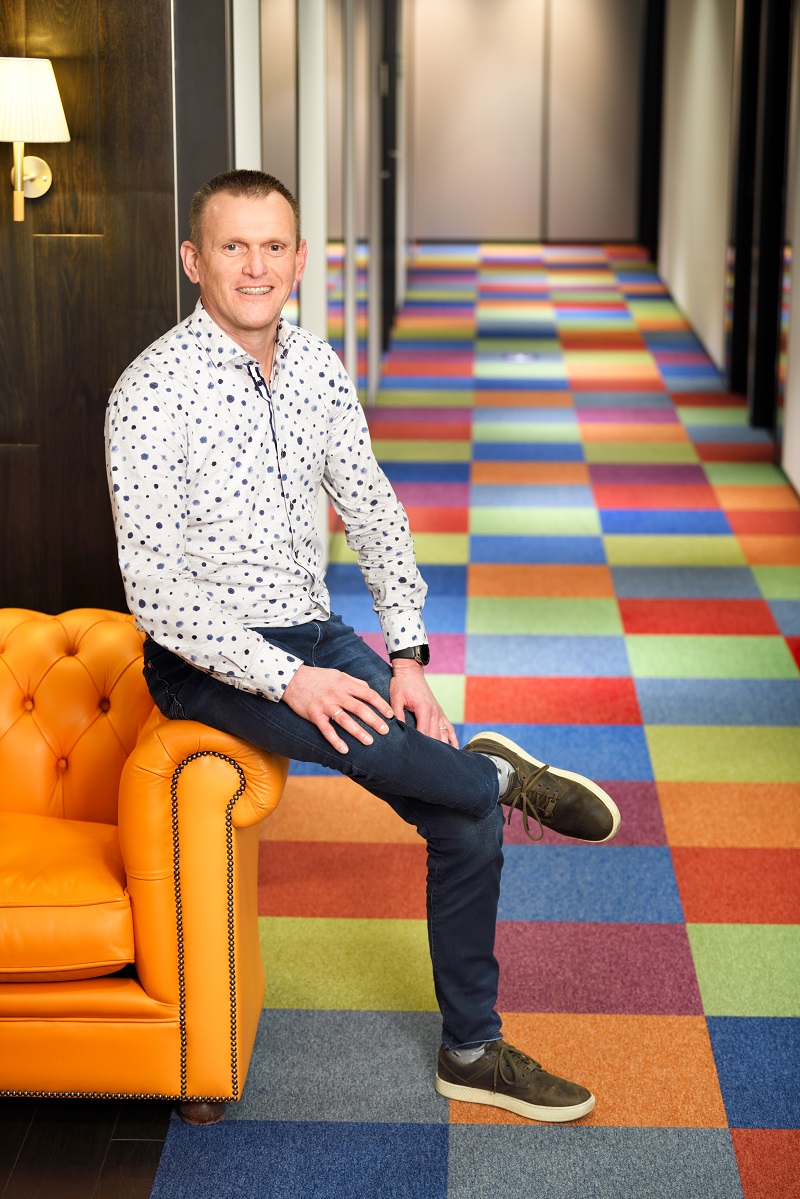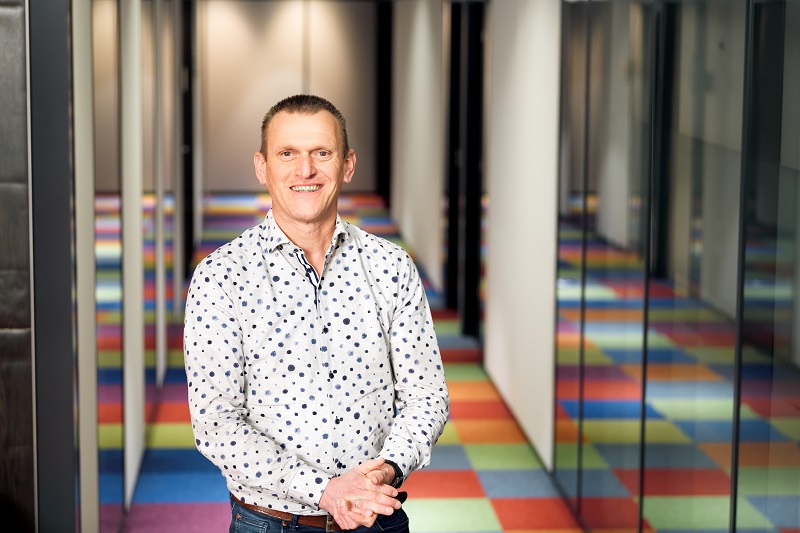Duncan Stiphout (Sioux)
Dutch high-tech is full of talented engineers. But how do companies ensure they keep this talent in house? For Sioux Technologies, it’s all about putting an emphasis on the people, and keeping them happy and challenged with interesting projects, life-long learning and custom training opportunities. Recently, Sioux and High Tech Institute organized a customized software security training with Duncan Stiphout.
Whether you’re fresh out of college or have been in the business for decades, there’s always something to learn. From personal to professional, social to technical skills, staying sharp is key – especially in the high-tech industry.
For Sioux Technologies, this fact is absolute. “We’re a high-tech solutions provider. We don’t make end-products; we deliver services, modules and submodules to our high-tech customers and partners,” describes Duncan Stiphout, group leader of the system control software department and people manager at Sioux. “For us, knowledge and expertise really set us apart. It’s not the products we make, but our people that are our greatest asset – we just prefer to keep calling them people,” he jokes.
 Here at Sioux, or anywhere else for that matter, not everyone has the aspiration to become a senior system architect,” says Duncan Stiphout. Photo by Bart van Overbeeke.
Here at Sioux, or anywhere else for that matter, not everyone has the aspiration to become a senior system architect,” says Duncan Stiphout. Photo by Bart van Overbeeke.
Over the last 20 years, Stiphout has learned a lot about people and growth. For the first half of his tenure, he served in highly technical roles – starting as a software engineer right out of college and working his way up to a software architect. “At some point in time, I got a taste of the project management side of the business. And I’ll be the first to tell you, that stuff isn’t for me,” he recalls.
For Stiphout, being responsible for continuous planning and management just didn’t feel like the right fit. A little bit of chaos, as he puts it, is a good thing. “What I learned though, was that was ok. Here at Sioux, or anywhere else for that matter, not everyone has the aspiration to become a senior system architect,” he says. So, roughly 10 years ago, Stiphout decided he’d like to find a role more suited to him – even if he didn’t know what that was at the time.
Hapiness manager
Speaking with his people manager, Stiphout began looking into the various options that best suited him and his career – both inside and outside of Sioux. That’s when a new people manager position opened up and caught his attention. “I talked to some managers and colleagues about my interest in the position and I received a lot of good feedback. A number of people had already worked with me and appreciated my communication style and that I could help guide and lead them in their personal career paths,” says Duncan Stiphout. “I also think that situational management is one of my core strengths and something that I rather enjoy. So, I jumped at the opportunity and took the chance with both hands.”
'My main focus lies in keeping my group challenged and happy in their roles as they further develop in their careers.'
Taking this new position was a big step for Duncan Stiphout. After all, he was stepping away from his more hands-on technical role and moving toward a manager’s role focused on growth. Not only his personal growth, but also that of the business, and now, of his colleagues. “Now, my focus isn’t only on projects but also on the happiness of others. I guess you can call me a happiness manager,” laughs Stiphout. “In this role, my job focuses on recruitment, retention and competence management. My main focus lies in keeping my group challenged and happy in their roles as they further develop in their careers.”
Function house
To keep its people happy and on the cutting edge of technology, Sioux has fully committed to life-long learning opportunities for employees. In fact, the company offers each of its workers an annual personal training budget of 6,000 euros to use at their discretion for everything from books to seminars and training courses. “This really helps us get the best out of our teams, and that’s a big part of my role – helping people find ways to improve themselves and keep them interested,” highlights Stiphout.
In practice, of course, this can take on many different forms – especially as employees grow within the company and climb up the ladder. “When we get new engineers, we help them look at their goals and map what we call their function house. Essentially, this highlights the opportunities and expectations for every level, from junior and senior software engineers to designers up to system architects,” illustrates Stiphout. “What we’ve found is that very early in someone’s career, many engineers are mostly interested in technical courses and improving their technical skills. Once someone reaches the level of designer, however, they often turn toward personal or soft-skills trainings dealing with influence and leadership.”
In the name
To offer employees leading-edge training, Sioux has several options available, offering internal coaching and in-house training, as well as turning to training organizations for their expertise. Stiphout: “We really see the value of training for our people. Of course, it’s difficult to calculate, but I believe there’s a real return on investment when my team members return from good trainings. You can see how inspired they are to try what they’ve learned, or how perspectives of events or their skills have changed as a result.”
Choosing the right training, though, can sometimes be a little tricky for a company like Sioux, so they really try to do their research to see what trainings have the best reviews and what could prove to be most valuable for their teams. “There are a number of different training organizations around, especially in software development – which, despite our multi-disciplined teams, is still a very big part of what we do at Sioux. For a lot of them, though, the trainings focus less on the high-tech domain, and more on other areas, for instance, administrative systems software,” explains Duncan Stiphout.

Photo by Bart van Overbeeke.
“That’s one reason we rely heavily on High Tech Institute and also why we look to contribute our expertise in helping design some courses – with a few specialized trainings, like the System Architecting (SysArch) and Multicore Programming courses, which are instructed by Sioux colleagues. Their reviews are outstanding and their portfolio offers a relevant training for every single level, from junior engineer to senior system architect. We find that so important because it perfectly matches our high-tech ambitions. Which makes perfect sense as ‘high tech’ is already in the name.”
Customization
In addition to sending employees to multiple training courses with High Tech Institute over the years, Duncan Stiphout has also worked with them to plan in-company editions of trainings for larger groups at Sioux. “Of course, they offer off-the-shelf courses, but when looking to make it in-company, the team at High Tech Institute offer the chance to tweak and customize a training to fit our specific needs,” says Stiphout.
'Sometimes, it means that we need to be critical of customer's demands.'
“Recently, I started working with Jaco Friedrich to customize an in-company session of the ‘Leadership for architects and other technical leaders’ training as a follow-up to the system architect’s training. In our work at Sioux, we’re really aimed at building customer intimacy and offering the unique perspective of our technical leadership. Sometimes, that means that we need to be critical of their demands,” explains Stiphout. “But learning how to better communicate that critique is extremely important and we believe that it’s something that distinguishes us from our competition. That’s why we’re looking forward to a continued collaboration with Jaco and the rest of the team, to offer our group at Sioux the chance to really build and enhance these skills.”
This article is written by Collin Arocho, tech editor of Bits&Chips.

